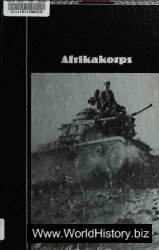The Egyptian headquarters had now received news of the existence of Israeli forces on the west side of the Canal. The information was scant and such as not to arouse very considerable concern. Indeed, the initial Egyptian reaction to the crossing was one of incredulity and light-hearted dismissal, with the various levels of command so blinded by self-adulation at their initial success that they tended to brush the operation off as a tiresome nuisance that could be dealt with. The feeling was that this was a move designed by the Israelis to boost morale, and was characterized by President Sadat as a spectacular ‘television operation’ and no more. On the afternoon of 16 October, the Egyptian General Staff met and decided to strike against the area of the Israeli operation on the morning of 17 October. Here again, sharp divisions of opinion emerged between the Minister of War and the Chief of Staff. General Shazli continued to favour withdrawing part of the forces from the east bank to the west, but, in the light of the new situation, he realized that it would be difficult to pull out the 21st Armoured Division, which was being engaged by the Israeli forces attempting to widen the corridor on the east bank. He therefore proposed withdrawing to the west bank the 4th Armoured Division and also the 25th Armoured Brigade from Third Army, and to strike with two armoured brigades at the Israeli bridgehead on the west of the Canal, attacking from a north-easterly direction. The Minister of War, however, opposed the withdrawal of any forces from the east bank, including the 4th Armoured Division. He also was of the opinion that the counterattack should be mounted on the east bank against the Israeli corridor, and that only a secondary effort be made on the west bank. When President Sadat came to the Headquarters, General Shazli presented his proposal to him: Sadat lost his temper and cut him short, shouting at him that if he mentioned once again the possibility of moving forces back from the east to the west bank he would have him court-martialled.
Early next morning, at 03.00 hours on 17 October, General Wassel, the commander of Third Army, expressed great doubts to Shazli about the idea of moving the 25th Armoured Brigade to counterattack on the east bank. Both he and the commander of the brigade, according to Shazli, were of the opinion that the brigade would be walking into a very dangerous trap. After a long discussion, again according to Shazli, Wassel said resignedly: ‘I will carry out the instructions, but I must advise you that this brigade will be destroyed.’ Thus, the Egyptian Command, appreciating that a major effort was being made by the Israeli forces to open a corridor north of the Great Bitter Lake, did not realize that while fighting of such intensity was going on in the area of the corridor, the Israeli Command was nevertheless launching a major effort across the Canal without an assured supply route.
So, following instructions, a determined effort was made on 17 October by the Egyptian Second and Third Armies to close the Israeli corridor and cut off all Israeli forces between Lexicon and the Canal. The Egyptian 14th Armoured Brigade had fought for two days against a lone tank battalion commanded by Lieutenant-Colonel Amir Jaffe to the west of the Chinese Farm and, by the evening of the 17th, had been largely destroyed, while the forces of the Egyptian 16th Infantry and 21st Armoured Divisions launched two major attacks against Adan’s forces at Tirtur and Akavish.
The Egyptian counterattack was mounted from ‘Missouri’ and the Chinese Farm towards Akavish. The sand dunes were covered by Egyptian tanks as they moved forward. Colonel Nir and Colonel Amir waited for them and engaged them in a major armoured battle, while Lieutenant-Colonel Amir Jaffe, who was to the west of the Egyptian attack, harassed them from the rear. Twice the Egyptians mounted a major attack; when they finally withdrew, they left a large number of tanks on the field — losses sufficient to seal the fate of the Chinese Farm. At this stage, the Egyptian Third Army launched the 25th Armoured Brigade from the south in order to complete the joint operation. It advanced northwards along the Great Bitter Lake in the direction of the Egyptian 16th Division bridgehead north of the Israeli corridor, with the mission of cutting the corridor and destroying the Israeli forces that had penetrated the bridgehead.
Meanwhile, on the morning of the 17th, a conference was held at Adan’s command post on the hills near Kishuf, attended by Adan, Elazar and Bar-Lev. The situation now looked Somewhat better, as Akavish Road was open, Tirtur Road was being cleared, the paratroopers had been extricated, the Egyptian counterattacks had been repulsed, and one bridge was already being launched and would be ready for traffic in a few hours. A violent dispute broke out between Sharon and Adan, with Sharon proposing that Adan’s division should deal with the corridor and the east bank, and that he would cross over to the west bank with his division. Adan opposed this proposal, maintaining that he had been fighting continuously for 30 hours to perform tasks that in his view Sharon had been supposed to do. He felt that his division deserved to share some of the glory that Sharon had already won by his crossing. Elazar decided in favour of Adan’s proposal, ordering Sharon to clean up the corridor and widen it; only then was he to cross. Raviv’s brigade would revert to Sharon and would exert pressure against the enemy, enabling Amir’s brigade to rejoin and cross with Adan. As the conference continued, Reshef (whose brigade was reorganizing in the area of Lakekan on the shores of the Great Bitter Lake) reported that the dust raised by an approaching Egyptian armoured brigade was coming dangerously near. Aerial reconnaissance confirmed that this was a column of about 100 T-62 tanks. It was the Egyptian 25th Armoured Brigade.
Adan left the conference in order to take command and direct this new battle personally. Before leaving, he received permission from Bar-Lev to release his third brigade under Arieh Keren from reserve. Battle was joined at midday, with Reshefs tanks opening fire at long range and knocking out the first two tanks in the Egyptian column. During the conference, as Reshefs reports came in, Adan had already ordered Natke Nir to leave one battalion in the area of Akavish and Tirtur and to place an armoured ambush with the rest of his forces to the east of Lexicon facing the Great Bitter Lake. At the same time, he ordered Arieh Keren, moving with his brigade along the lateral road, to sweep around and come across country on a secondary road, deploying to the east of Botzer at the southern end of the Great Bitter Lake, thus placing himself to the east and to the rear of the advancing Egyptian brigade. So the Egyptian 25th Armoured Brigade, comprising 96 tanks and large numbers of armoured personnel carriers, artillery, fuel and supply lorries, moved slowly into a trap — to the north, blocking the road at Lakekan was a small unit of Reshefs forces; to the west was the lake; between it and the road, there was an Israeli minefield; to the east, Natke Nir was deployed; and, to the south-east, Arieh Keren’s brigade closed off the Egyptian rear.
Nir’s brigade opened fire first. Part of the Egyptian force turned to leave the road, moved towards the lake and tried to go back on its tracks. It ran into the Israeli minefield along the lake. The remainder charged towards Nir’s forces waiting for them in the sand dunes, and began to be destroyed by his tanks. When the Egyptian forces had been locked in battle with Nir’s forces for half an hour, Keren’s brigade moved from the Gidi road in a wide, left flanking movement towards Botzer. His force opened fire: the Egyptian brigade was completely boxed in, and the shore of the lake became a line of fire and smoke as, one by one, the tanks and vehicles in the Egyptian force were picked off. Magen’s division from the south meanwhile lent artillery support to Keren’s attack. Some of the Egyptian tanks turned to flee. Part of Keren’s force followed them, but ran into an Israeli minefield near Botzer. By 17.30 hours, the battle, a classic of its kind and the dream of any armoured commander, was over: 86 T-62 tanks out of a total of 96 had been destroyed; four of them, including the tank carrying the Egyptian brigade commander, escaped into the Botzer fortification. All the armoured personnel carriers were destroyed, as were all the supply trains. Israeli losses were four tanks that had run into the minefield near Botzer when pursuing the Egyptians.
At 16.00 hours, while the battle along the Great Bitter Lake was being waged, the pontoon bridge across the Canal had been completed. Adan regrouped his division, refuelled under heavy enemy shelling and prepared to cross the Canal. He had borne the brunt of the fighting on the 16th and 17th. The 17th had been a good day for him: he had cleared most of Tirtur and Akavish, and had destroyed the Egyptian 25th Armoured Brigade. On the night of 17/18 October, his division crossed the Canal.
Meanwhile, Reshefs brigade had reorganized and, on 18 October, under Sharon’s orders, it attacked the Chinese Farm from the rear. The Egyptian forces had by now been worn down by the intense fighting and this time the Israeli attack was successful. The Chinese Farm fell. Before the eyes of the Israelis there unfolded a picture of a highly organized infantry, anti-tank, defensive locality with very heavy concentrations of anti-tank weapons, anti-tank guns and Sagger missiles abandoned on all sides. Following the fall of this position, Reshef pressed northwards, widening the corridor for some three miles. In the afternoon, the Minister of Defence arrived on the battlefield with Sharon. As he looked down and saw the scene of destruction and the evidence of the incredibly bitter and cruel battle that had taken place, he was visibly shaken. Reshef said to him: ‘Look at this valley of death.’ Dayan murmured in astonishment: ‘What you people have done here!’




 World History
World History









